
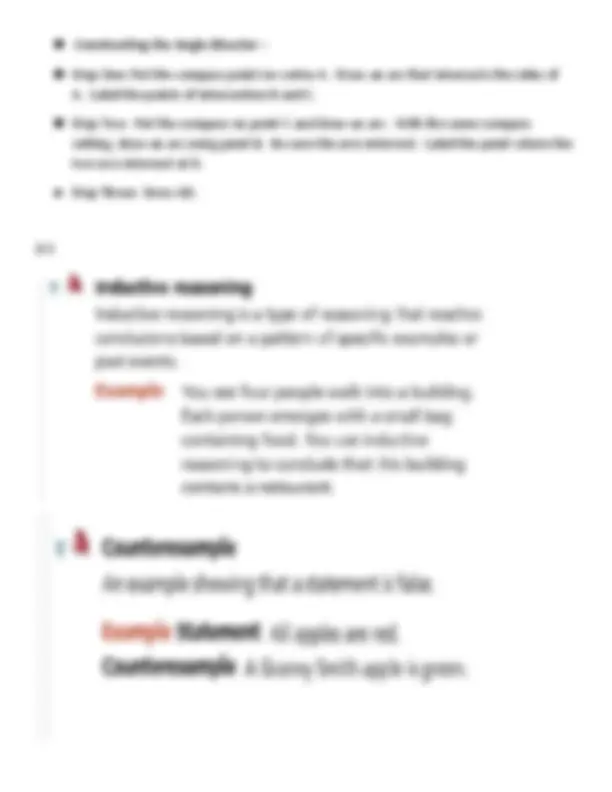
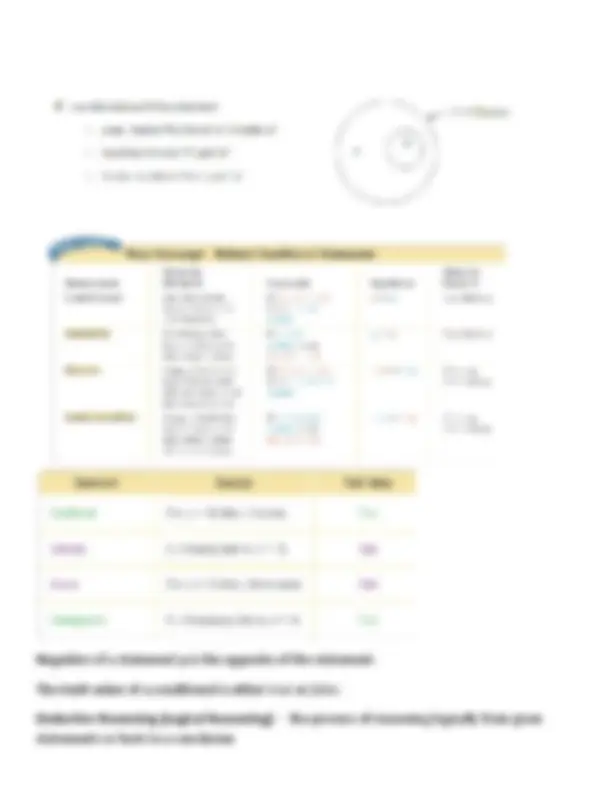
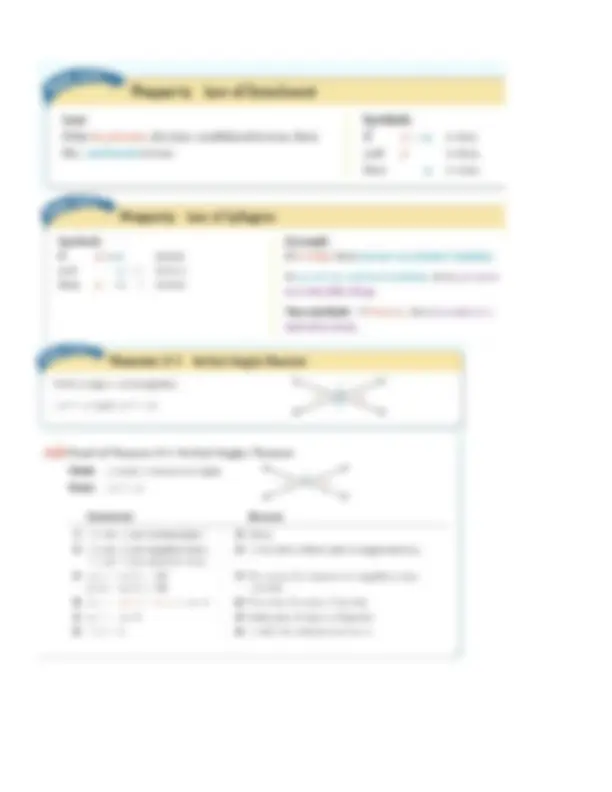
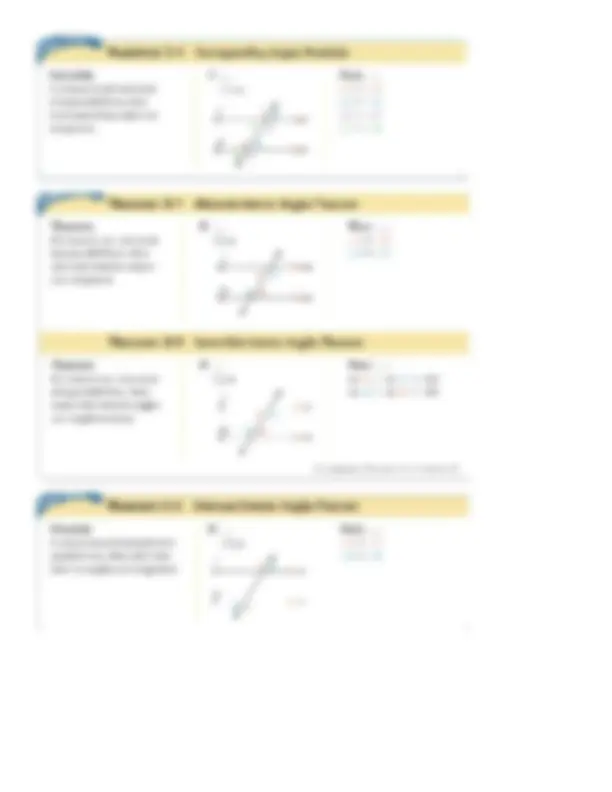
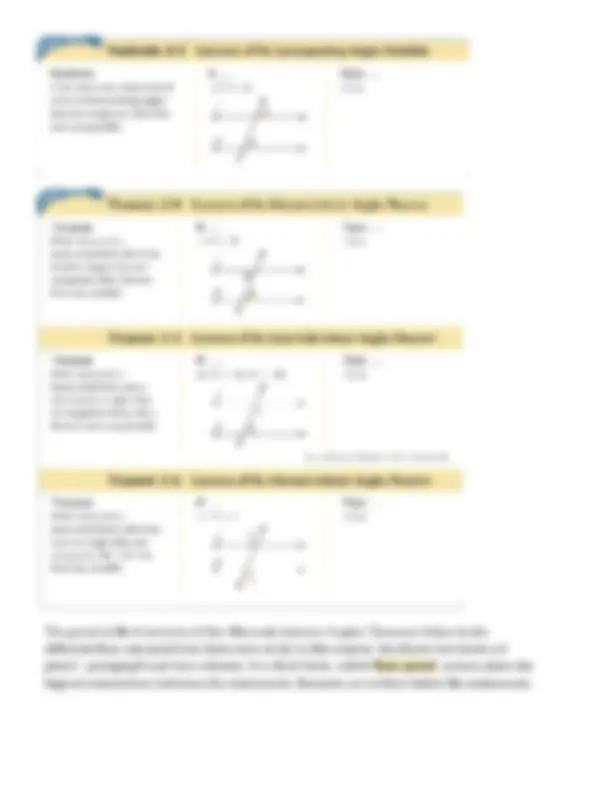
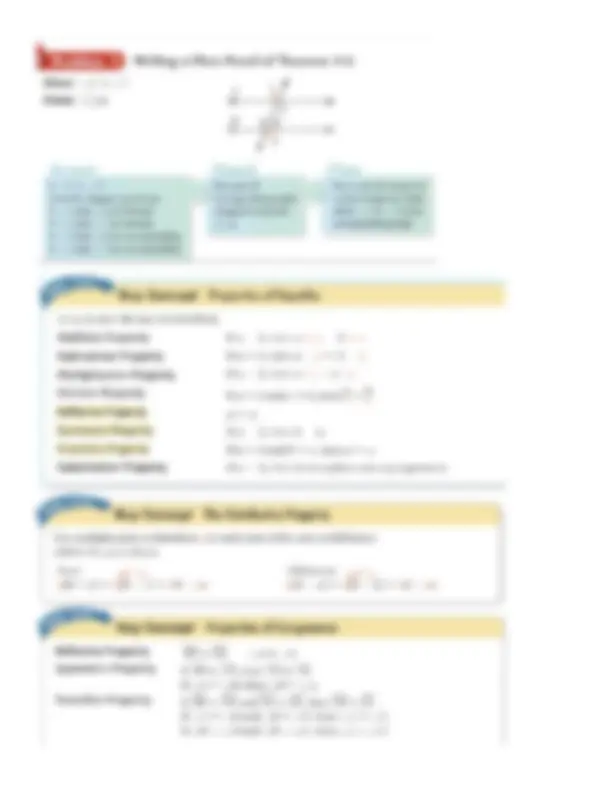
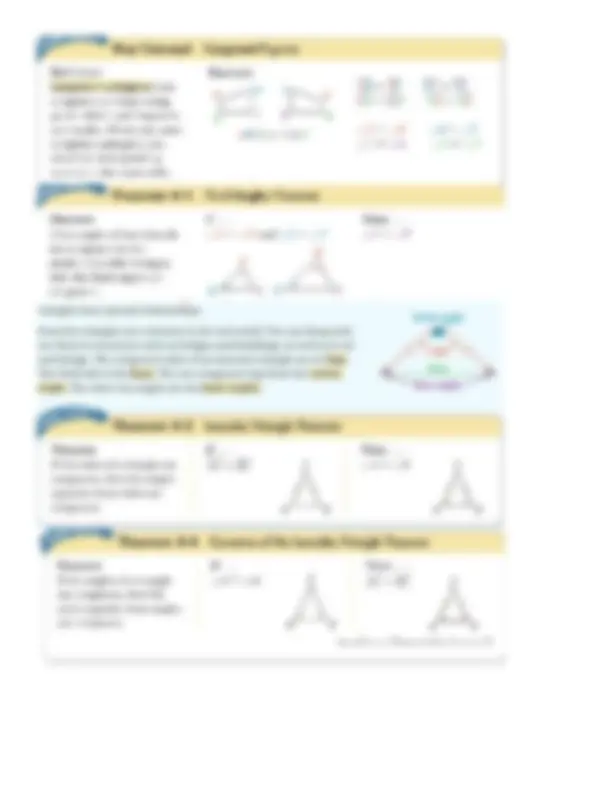
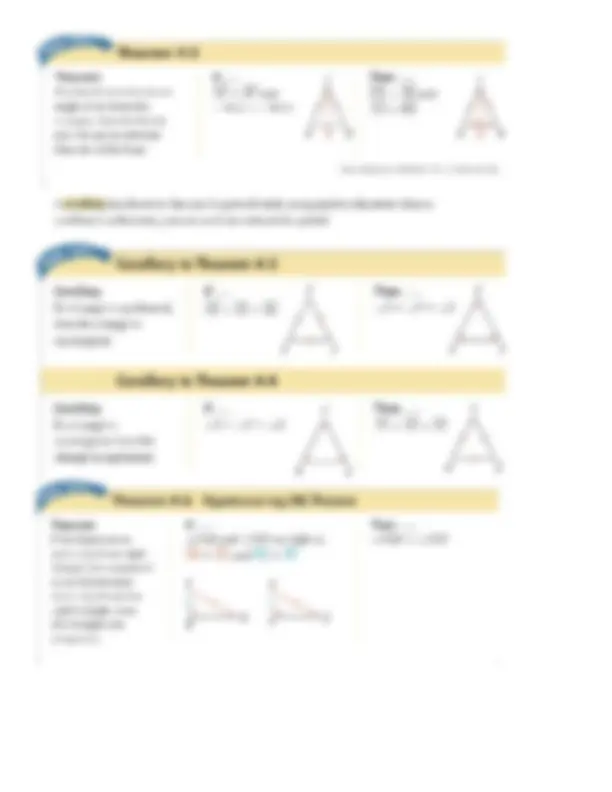
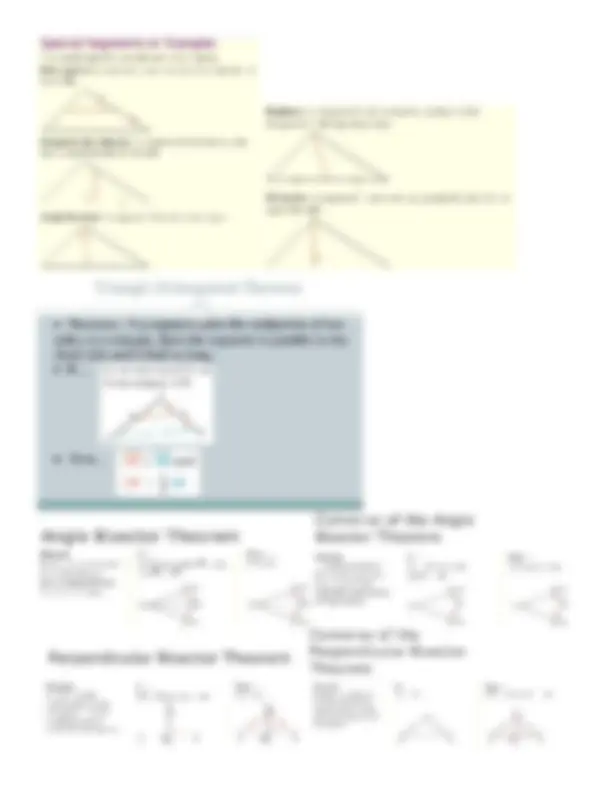
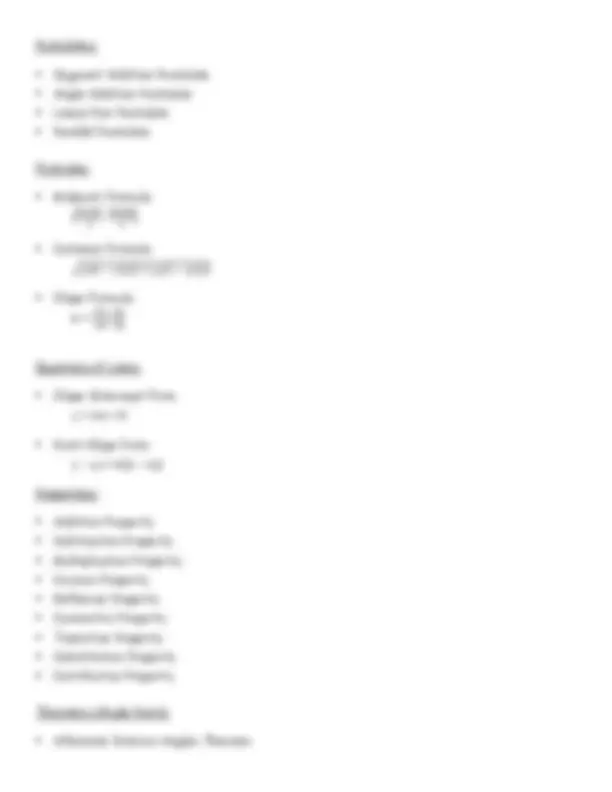
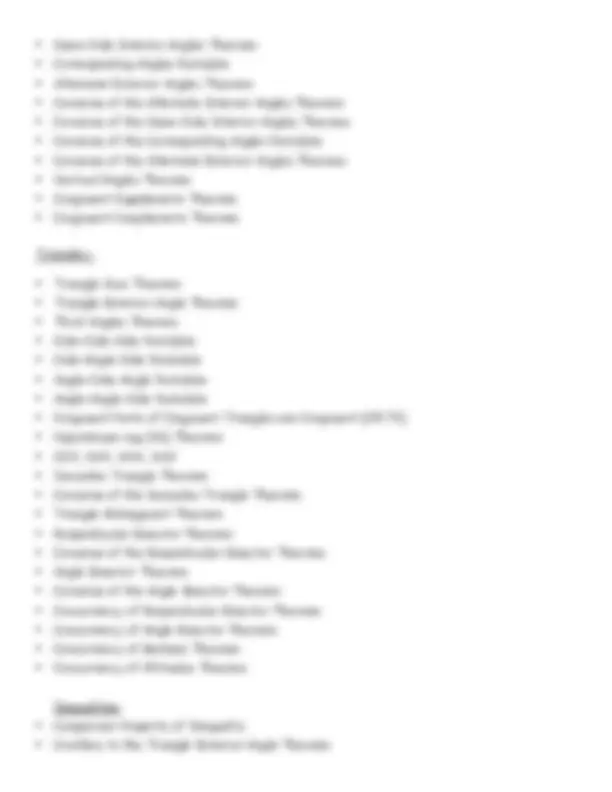
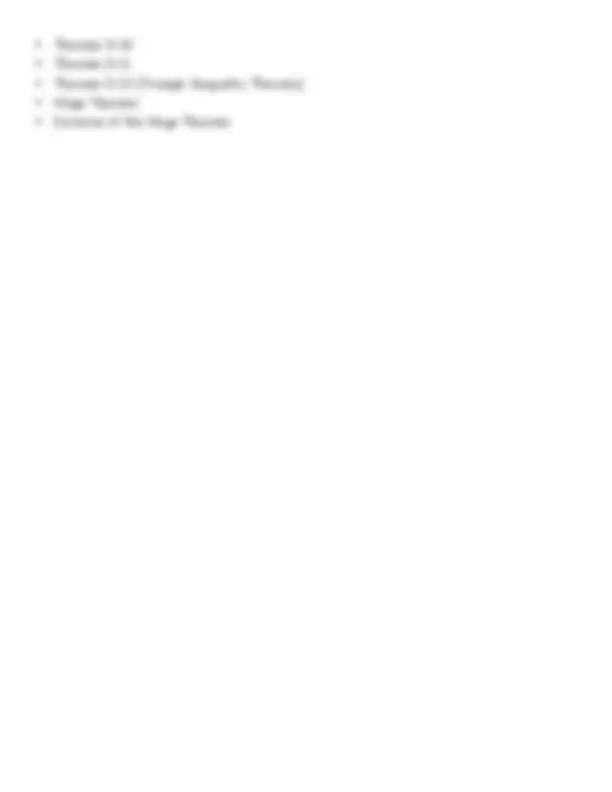


Study with the several resources on Docsity

Earn points by helping other students or get them with a premium plan


Prepare for your exams
Study with the several resources on Docsity

Earn points to download
Earn points by helping other students or get them with a premium plan
Community
Ask the community for help and clear up your study doubts
Discover the best universities in your country according to Docsity users
Free resources
Download our free guides on studying techniques, anxiety management strategies, and thesis advice from Docsity tutors
Postulates, theorems, properties and sample problems for the Geometry exam
Typology: Cheat Sheet
1 / 20

This page cannot be seen from the preview
Don't miss anything!













Constructions
Same-Side Interior Angles Theorem Corresponding Angles Postulate Alternate Exterior Angles Theorem Converse of the Alternate Interior Angles Theorem Converse of the Same-Side Interior Angles Theorem Converse of the Corresponding Angles Postulate Converse of the Alternate Exterior Angles Theorem Vertical Angles Theorem Congruent Supplements Theorem Congruent Complements Theorem Triangles : Triangle-Sum Theorem Triangle Exterior Angle Theorem Third Angles Theorem Side-Side-Side Postulate Side-Angle-Side Postulate Angle-Side-Angle Postulate Angle-Angle-Side Postulate Congruent Parts of Congruent Triangles are Congruent (CPCTC) Hypotenuse Leg (HL) Theorem SSS, SAS, ASA, AAS Isosceles Triangle Theorem Converse of the Isosceles Triangle Theorem Triangle Midsegment Theorem Perpendicular Bisector Theorem Converse of the Perpendicular Bisector Theorem Angle Bisector Theorem Converse of the Angle Bisector Theorem Concurrency of Perpendicular Bisector Theorem Concurrency of Angle Bisector Theorem Concurrency of Medians Theorem Concurrency of Altitudes Theorem Inequalities Comparison Property of Inequality Corollary to the Triangle Exterior Angle Theorem
Theorem 5- Theorem 5- Theorem 5-12 (Triangle Inequality Theorem) Hinge Theorem Converse of the Hinge Theorem